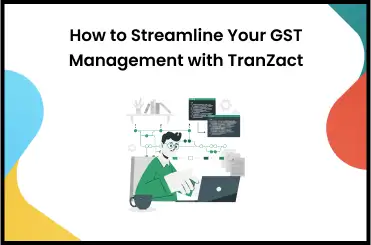Complying to the list of documents required for GST registration is the starting point of ensuring effective GST registration for businesses. This helps businesses fulfill thorough tax requirements and also claim input tax credit on a timely basis.
In this article, we shall cover the GSTIN format, the procedure to register under GST, and other key aspects in addition to the documents required for GST registration. Do read if you'd like to expand your knowledge on this topic.
Why Is GST Registration Necessary?
Any business with an aggregate turnover of over ₹40 lakhs annually must apply for GST registration in India. If your business operates in a special category state like Assam, Nagaland, or Manipur, you must have a turnover of ₹20 lakhs to apply for GST services.
If you provide services, you need an aggregate turnover of ₹20 lakhs (in the normal category) and ₹10 lakhs (in the special category) for GST registration.
Why is it necessary to register for GST in India? After registration, the individual or business entity obtains a GST registration certificate and a 15-digit unique GST identification number (or GSTIN). You need the GSTIN to make and track your tax payments - as well as to comply with tax authorities in India.
Along with monitoring your GST payments, you can use your GST registration to avail of any Input Tax Credit (or ITC) on your purchases. Besides that, you may also need GST registration to offer services on any e-Commerce platform.
Business enterprises fulfilling the above criteria can apply for GST registration by submitting a list of documents. Next, let's look at the list of documents required for GST registration.
List of Documents Required for GST Registration
The documents required for new GST registration depend on the type of business (for instance, individual or proprietorship, or partnership). Irrespective of the type of business enterprise, here are some common documents required for GST registration:
- PAN and Aadhar card
- Passport-size photographs of the business owners or partners
- Valid phone number and email address of the primary business owner
- Verified address proof of the business location
- Bank account details
Here is the list of documents required for GST registration for a proprietorship firm (or person):
-
PAN card of the proprietor
-
Aadhar card of the proprietor
-
Photograph of the business owner in JPEG format (with a maximum file size of 100KB)
-
Bank account details - in the form of a canceled cheque or a recent copy of the bank statement or passbook (to be uploaded in JPEG or PDF format - with a maximum file size of 100 KB)
-
Address proof - by uploading any of the following documents:
-
Copy of electricity bill
-
Receipt of paid property tax
-
Copy of the municipal khata
-
The ownership document (only for a self-owned property)
-
Lease or rent agreement.
-
No Objection Certificate (NOC) or consent letter from the property owner (only for shared or rented property)
Here is the list of documents required for GST registration of a partnership firm (including LLP):
-
PAN card of all partners (including the managing partner and authorized signatory)
-
Copy of the partnership deed
-
Photographs of all business partners and authorized signatories in JPEG format (with a maximum file size of 100KB)
-
Aadhar cards of all the business partners and authorized signatories
-
Proof of appointment of the authorized signatory
-
Registration certificate or board resolution (only for LLP)
-
Bank account details - in the form of a canceled cheque or a recent copy of the bank statement or passbook (to be uploaded in JPEG or PDF format - with a maximum file size of 100 KB)
-
Address proof of all the business partners - by uploading any of the following documents:
- Passport
- Driving license
- Voter identity card
- Aadhar card
-
Address proof of the business premise (or main office) - by uploading any of the following documents:
- Copy of electricity bill
- Receipt of paid property tax
- Copy of the municipal khata
- The ownership document (only for a self-owned property)
- Lease or rent agreement.
- NOC or consent letter from the property owner (only for shared or rented property)
Here is the list of GST registration documents required for Hindu Undivided Families (or HUFs):
-
PAN card of the HUF
-
PAN and Aadhar card of the HUF Karta (or family patriarch)
-
Photograph of the business owner in JPEG format (with a maximum file size of 100KB)
-
Bank account details - in the form of a canceled cheque or a recent copy of the bank statement or passbook (to be uploaded in JPEG or PDF format - with a maximum file size of 100 KB)
-
Address proof of the business premise (or main office) - by uploading any of the following documents:
- Copy of electricity bill
- Receipt of paid property tax
- Copy of the municipal khata
- The ownership document (only for a self-owned property)
- Lease or rent agreement.
- NOC or consent letter from the property owner (only for shared or rented property)
Finally, if you are operating a public or private company that is either Indian or foreign, here are the documents required for the GST registration of the company along with the size of the documents required for GST registration:
- PAN card of the company
- Certificate of Incorporation issued by the Indian Ministry of Corporate Affairs
- Any memorandum (or article) of the association
- PAN and Aadhar card of the authorized signatory, who needs to be an Indian citizen (even for foreign companies)
- PAN card and address proofs of all the company directors
- Photographs of directors and the authorized signatory in JPEG format (with a maximum file size of 100KB)
- Board resolution or proof of appointment of the authorized signatory in JPEG or PDF format (with a maximum file size of 100 KB)
- Bank account details - in the form of a canceled cheque or a recent copy of the bank statement or passbook (to be uploaded in JPEG or PDF format - with a maximum file size of 100 KB)
- Address proof of the business premise (or main office) - by uploading any of the following documents:
- Copy of electricity bill
- Receipt of paid property tax
- Copy of the municipal khata
- The ownership document (only for a self-owned property)
- Lease or rent agreement.
- NOC or consent letter from the property owner (only for shared or rented property)
You can upload these documents and register your company through the GSTN portal. In the next section, we'll draw light on how to register under GST.
How to Register Under GST
You can use the GSTN portal for the online registration of your company. You can also visit the GST portal and perform this 2-step process:
- Apply for a temporary registration number (TRN) - where you do not need to submit your documents.
- Get a permanent registration number (PRN) - by entering your TRN and uploading the list of documents.
On successful registration, an Application Reference Number (ARN) is sent to your registered email address and mobile number. You can use this ARN to check the status of your application on the GSTN portal.
Understanding the GSTIN Format
GSTIN stands for Goods and Service Tax (GST) Identification Number. It is the unique identification number for every registered company or individual in the GST regime in India. This is a 15-digit unique number based on the PAN card details of the registered individual or company.
The GSTN format is as explained below:
- The first two digits represent the state code of the registered company or individual.
- The next 10 digits are the registered PAN of the registered company or individual.
- The next number indicates the GST registrations made by the company (or individual) with the same PAN.
- The next character is, by default, "Z" which is added for every GSTIN.
- The last digit is a character code used to detect any errors. This is denoted by a number or alphabet.
Here is an example of a GSTIN: 22-ABCDE0123F-2-Z-5
- The first two digits (22) are the state code, which varies for every state in India. For example, it is 22 for Chhattisgarh, 7 for Delhi, and 29 for Karnataka.
- The next 10 digits (ABCDE0123F) are the PAN of the registered entity.
- The next number (2) means the company has two registrations in the same state. If the company has 11 registrations in the same state, the alphabet "B" is assigned in this place. A single company can have up to 35 registrations within the same state.
- This is followed by Z, which is the default value.
- The last digit (5) is the check code.
Additionally, you can verify your GSTIN on the GST portal. You only need to search your GSTIN in the 'Search Taxpayer' field. Based on the entered GSTIN, the portal displays the organization details, including its:
- Legal business name
- Trade name
- Date of registration
- Type of business (proprietorship/ partnership)
- GSTIN status
- Administrative office and place of business
As we have seen, the documents required for GST registration vary depending on the type of business firm. Any person or business entity (with an annual turnover of ₹40 lakhs) must obtain a GST registration in India by submitting the required documents.
Stay GST-compliant With TranZact
TranZact is a team of expert engineers who have designed a cloud-based business automation software trusted by 10,000 Indian SMEs. It can provide various GST-related documentation and invoices, along with managing sales, purchases, inventory, and production for manufacturing businesses. It helps SMEs to digitize their business operations with ease and efficiency.
















